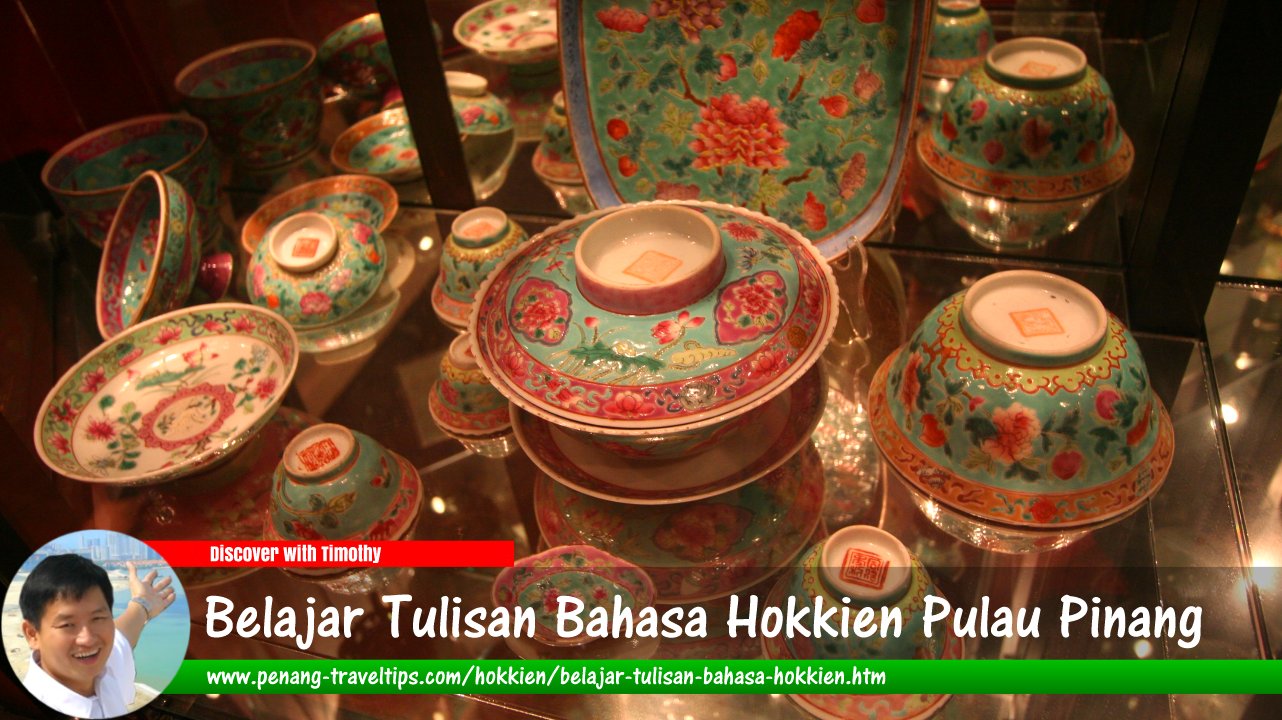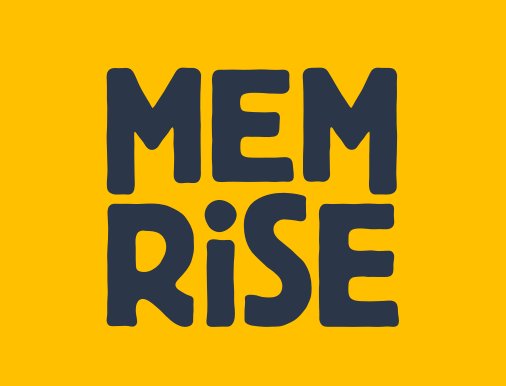 Belajar Tulisan Bahasa Hokkien Pulau Pinang (8 Oktober 2009)
Belajar Tulisan Bahasa Hokkien Pulau Pinang (8 Oktober 2009)
Sebelumnya Bahasa Mandarin diperkenalkan di Malaysia pada awal abad ke-20, orang Cina di Pulau Pinang menggunakan Bahasa Hokkien sebagai bahasa perantaraan sesama sendiri. Di Malaysia, terdapat dua loghat Bahasa Hokkien yang utama. Bahasa Hokkien yang dipertuturi di Pulau Pinang adalah berasaskan loghat Bahasa Hokkien yang digunakan di bandaraya Zhangzhou, di Wilayah Fujian, di selatan Negara Cina. Loghat ini menjadi asas untuk Bahasa Hokkien Pulau Pinang, yang juga dipertuturi orang Cina di sebelah utara Semenanjung Malaysia, dari Perlis sampai ke bandar Taiping.
Sebaliknya, loghat Bahasa Hokkien yang dipertuturi orang Cina sepanjang pinggir pantai Semenanjung Malaysia, dari Perak sampai ke Johor dan juga di Singapura, berasal dari loghat Hokkien yang dipertuturi di bandaraya Quanzhou. Zhangzhou dan Quanzhou merupakan bandar-bandar pelabuhan pada masa lampau, khususnya dari abad ke-16 sampai abad ke-20. Pada masa itu, saudagar Cina yang datang berniaga di Asia Tenggara telah membawa loghat yang mereka digunakan bersama mereka.
Pada zaman Kesultanan Melaka, Pemerintahan Portugis dan Belanda, saudagar Cina juga berkunjung ke Melaka untuk berdagang. Kesemua mereka adalah orang lelaki. Untuk mengukuhkan urusniaga mereka di setiap pelabuhan yang mereka kunjungi, saudagar-saudagar Cina pada masa itu telah berkahwin dengan orang tempatan. Daripada perkahwinan campur ini telah wujudnya Bahasa Baba Melaka. Sebabnya, walaupun saudagar-saudagar Cina ini dapat menapakkan seni bina dan budaya mereka di Melaka, mereka tidak dapat mewariskan bahasa yang mereka gunakan. Oleh sebab mereka sering merantau, anak-anak mereka dibiarkan di bawah asuhan ibu tempatan, lantas bahasa yang dipelajari anak-anak mereka adalah bahasa tempatan.
Saudagar-saudagar Cina yang melawat ke Melaka adalah dari sukukaum Hokkien. Oleh sebab itu, Bahasa Baba Melaka adalah bahasa Melayu dicampur perkataan Bahasa Hokkien. Pada masa itu,
Loghat yang berasal dari Zhangzhou telah berakar umbi di sebelah utara Semenanjung Malaysia, sejauh Phuket di Thailand, dan Medan di Indonesia. Walaupun pendatang Cina yang sampai ke Pulau Pinang pada kurun-kurun kemudian bukan seluruhnya dari Zhangzhou, tetapi juga dari Quanzhou dan Xiamen, loghat yang pada asalnya dari Zhangzhou telah menjadi loghat untuk bahasa perantaraan orang Cina. Lambat laun, bukan sahaja orang Cina dari sukukaum Hokkien, tetapi mereka dari sukukaum Teochew, Kantonis, Hakka dan Hainan turut menerima Bahasa Hokkien Pulau Pinang sebagai bahasa perantaraan antara mereka.
Bahasa Hokkien Pulau Pinang merupakan bahasa lisan. Pada masa dahulu, bahasa ini digunakan hanya untuk bercakap, bukannya untuk bertulis. Sebabnya, orang Cina menggunakan bahasa yang berlainan untuk bertulis. Bahasa itu bukan Bahasa Mandarin, tetapi, Bahasa Cina Klasik, yang dijuga digelar Bahasa Cina Sastera.
Bahasa Cina Sastera adalah bahasa Cina yang digunakan di seluruh Negara Cina, sehingga awal abad ke-20, sebagai bahasa komunikasi bertulis. Suatu keistimewaan Bahasa Cina Sastera adalah, walaupun tulisan yang sama digunakan untuk maharaja berhubungan dengan kesemua wilayah Negara Cina, cara membaca mengikut sebutan tempatan. Orang Hokkien yang mempelajari Bahasa Cina Sastera akan membacanya ikut sebutan sastera orang Hokkien, orang Kantonis pula membacanya dalam sebutan sastera orang Kantonis. Dengan yang demikian, walaupun tulisannya sama, penyebutannya bergantung kepada sebutan tempatan setiap wilayah. Namun, ini membolehkan komunikasi berjalan antara ibu negara dan setiap wilayah.
Sejak Pulau Pinang diasas hingga ke permulaan abad ke-20, kebanyakan orang Cina yang tiba di Pulau Pinang adalah dari golongan miskin papa. Mereka datang untuk mencari rezeki, sebagai pekerja lombong, buruh kasar dan orang suruhan. Hampir kesemua mereka adalah buta huruf. Hanya segelintir orang Cina di Pulau Pinang yang berpeluang belajar menulis Bahasa Cina. Belajar Tulisan Bahasa Hokkien Pulau Pinang is a system created specifically for Penang Hokkien in 2013. Its purpose is to provide an easy means to write Penang Hokkien so that the language can have a written form for use on various communication devices such as on computers and smartphones.
One of the issues hampering literacy in Penang Hokkien is the difficulty to write in the traditional romanized forms such as Church Romanisation, which uses diacritic marks. Belajar Tulisan Bahasa Hokkien Pulau Pinang uses tone numbers in place of diacritic marks, enabling Penang Hokkien to be typed on all standard keyboards and keypads without the need to download any apps or plug-ins.
To make Penang Hokkien easy for people to learn, the number of tones in the language is reduced from the traditional seven down to just four in Taiji, corresponding to the four tones in Mandarin. This can be achieved without any loss in intelligibility because Taiji does not recognize checked syllables or stops as separate tones.
Earlier romanised forms, particularly Church Romanisation or Pe̍h-ōe-jī, distinguish seven distinct tones, because checked tones, known by the Chinese calque "entering tones" are treated as separate tones, but are not so in Belajar Tulisan Bahasa Hokkien Pulau Pinang.
Belajar Tulisan Bahasa Hokkien Pulau Pinang presents a radical departure from traditional romanization, a move deemed necessary to arrest the decline in knowledge of Penang Hokkien and to make it relevant for the modern age.
Belajar Tulisan Bahasa Hokkien Pulau Pinang was created in Penang for the use of Penang Hokkien. Therefore the rule of tone and tone changes (or tone sandhi) is specific to Penang Hokkien. Nevertheless, for transcribing sentences, you can use it for other dialects of Hokkien.
The Tone System of Belajar Tulisan Bahasa Hokkien Pulau Pinang
There are four classes of tones in Taiji. Every syllable is numbered 1, 2, 3, 4, and 33. Tones 1, 2, 3, and 4 correspond to the four tones in Mandarin, as understood by Mandarin speakers in Penang. Tone 33 sounds the same as tone 3 but behaves differently. Every syllable in Taiji has to end with a tone number.Example
ma1 , ma2
, ma2  , ma3
, ma3  , ma4
, ma4 
pa1
 , pa2
, pa2  , pa3
, pa3  , pa4
, pa4 
kau1
 , kau2
, kau2  , kau3
, kau3  , kau4
, kau4 
kong1
 , kong2
, kong2  , kong3
, kong3  , kong4
, kong4 
Syllables and Morphemes
A syllable is a string of letters that can be read as a sound. If that sound has a meaning, it is called a morpheme. If the sound is meaningless in Penang Hokkien, it isn't a morpheme, it is just a syllable.Morphemes can be standalone words. For example, jip1
 (to go in), chut3
(to go in), chut3  (to go out). Syllables with different tone numbers are different morphemes with different meanings, for example, kau1
(to go out). Syllables with different tone numbers are different morphemes with different meanings, for example, kau1  (to hang), kau2
(to hang), kau2  (monkey), kau3
(monkey), kau3  (enough) and kau4
(enough) and kau4  (nine).
(nine).Morphemes with tones 1, 2, 3, and 4 undergo tone sandhi. Morphemes with tones 1 and 2 sandhi to tone 3, while morphemes in tones 3 and 4 sandhi to tone 1. Morphemes with tone 33 sound the same as tone 3 but do not sandhi.
2) There is a small number of some heterographs (words that are spelled differently, but pronounced the same way, i.e. "way" and "weigh") to help bring out the written meaning more clearly, for example, kau4
 (nine) and kao4
(nine) and kao4  (dog).
(dog).3) Words of tone 3 and tone 33 are pronounced the same way, but often mean different things, for example, lau3
 (to leak) and lau33
(to leak) and lau33  (old). The reason there are two types of tone 3 words (3 and 33) is due to how the morpheme behaves (to be explained soon).
(old). The reason there are two types of tone 3 words (3 and 33) is due to how the morpheme behaves (to be explained soon).
The Rule of Tone Sandhi
Words can also be formed by putting morphemes together, for example, lau3juak1 (fun), pan3gee2
(fun), pan3gee2  (cheap), etc.
(cheap), etc.When two morphemes are side by side, the one in front usually changes its tone.
Ang2
 (red) and sna1
(red) and sna1  (shirt) becomes ang3 sna1
(shirt) becomes ang3 sna1  (red shirt).
(red shirt).Wah4
 (I), boek3
(I), boek3  (want), khee3
(want), khee3  (to go), co3
(to go), co3  (to do) and kang1
(to do) and kang1  (work). Strung together, those words form a sentence:
(work). Strung together, those words form a sentence:Wah1 boek1 khee1 co1 kang1
 (I want to go to work). As you see, all the words change tones except the last one.
(I want to go to work). As you see, all the words change tones except the last one.
Citation Tone and Sandhi Tone
Words that are taken directly from the dictionary, before they undergo tone change, is called "citation form". Words that have undergone tone change is called "sandhi form".Words ending in tone 1 or tone 2 change their tone to 3 when placed in front of another word.
Example: ang1
 (husband) + bor4
(husband) + bor4  (wife) = ang3bor4
(wife) = ang3bor4  (husband and wife, couple)
(husband and wife, couple)Example: ang2
 (red) + sna1
(red) + sna1  (shirt) = ang3 sna1
(shirt) = ang3 sna1  (red shirt)
(red shirt)Words ending in tone 3 or tone 4 change their tone to 1 when placed in front of another word.
Example: lau3
 (to leak) + chooi4
(to leak) + chooi4  (water) = lau1 chooi4
(water) = lau1 chooi4  (leaking water)
(leaking water)Example: kang4
 (river) + pni1
(river) + pni1  (side) = kang1 pni1
(side) = kang1 pni1  (riverside)
(riverside)Tone 33 sounds the same as tone 3, except that, words ending in tone 33 do not change the final tone when placed in front of another word.
Example: lau33
 (old) + lang2
(old) + lang2  (man) = lau33 lang2
(man) = lau33 lang2  (old man)
(old man)Note that lau3 (to leak) and lau33 (old) sound the same but due to the way one changes tones while the other doesn't, we can tell which is which when we see them in writing.
The Penang Hokkien Dictionary some 6,000 words in use. The dictionary has audio to help you hear how each word is pronounced. All the entries include definition in English and Malay, with a large number also showing example sentences, the Chinese characters, and the same word in Taiwanese Hokkien and Amoy Hokkien. You can reference it for free from anywhere in the world. To learn more of Penang Hokkien, go to Penang Hokkien Made Easy or try the free online course, Penang Hokkien on Memrise.
The Vowels and Consonants in Belajar Tulisan Bahasa Hokkien Pulau Pinang
The vowels and consonants in Belajar Tulisan Bahasa Hokkien Pulau Pinang follow that of English and Malay, in order that Penang Hokkien speakers, who are accustomed to these two languages, will be able to pronounce the words correctly through intuition.Initial Consonants
Unlike Mandarin, which has initial consonant sets comprising only voiceless unaspirated and voiceless aspirated (2 types only), in Hokkien, the initial consonant sets comprise the voiced, voiceless unaspirated and voiceless aspirated (3 types). As such, Pinyin, created for Mandarin, is not suitable for spelling Hokkien. The following are initial consonants to bear in mind.
b, p and ph
The b and p are the same as in Malay, as in bong1 (
 to touch), bee33 (
to touch), bee33 ( to smell), pang1 (
to smell), pang1 ( plank). The ph sound is similar to the p sound, with a burst of air, phang1 (
plank). The ph sound is similar to the p sound, with a burst of air, phang1 ( fragrant), phu2 (
fragrant), phu2 ( floating).
floating).j, c and ch
The j and c are the same as in Malay, as in jit (
 sun), ju2 (
sun), ju2 ( (disheveled), ca4 (
(disheveled), ca4 ( early), cu4 (
early), cu4 ( to cook). The ch sound is similar to the c sound, with a burst of air, chu4 (
to cook). The ch sound is similar to the c sound, with a burst of air, chu4 ( rodent), char4 (
rodent), char4 ( to stir fry).
to stir fry).g, k and kh
The g and k are the same as in Malay, gong33 (
 stupid), gu2 (
stupid), gu2 ( cow), kong33 (
cow), kong33 ( to hit), koo1 (
to hit), koo1 ( tortoise). The kh sound is similar to the k wound with a burst of air, khang1 (
tortoise). The kh sound is similar to the k wound with a burst of air, khang1 ( hole), khin1 (
hole), khin1 ( light, not heavy)
light, not heavy)d, t and th
The d and t are the same as in Malay. The d appears only in one word, dan3-dan1 (
 immediately), tan4 (
immediately), tan4 ( to wait), teng1 (
to wait), teng1 ( lantern). The th is similar to the t with a burst of air, thu2 (
lantern). The th is similar to the t with a burst of air, thu2 ( to delay), tho2 (
to delay), tho2 ( peach), thng1 (
peach), thng1 ( soup).
soup).I wish you all the best in getting to know Belajar Tulisan Bahasa Hokkien Pulau Pinang!

References
Read also: Belajar Tulisan Bahasa Hokkien Pulau Pinang of Penang Hokkien; Return to Penang Hokkien Grammar
Language Learning Tools
Use the following language learning tools to learn Penang Hokkien!Learn Penang Hokkien with uTalk
This app opens the door to over 150 languages. Latest updates on Penang Travel Tips
Latest updates on Penang Travel Tips

Copyright © 2003-2025 Timothy Tye. All Rights Reserved.

 Go Back
Go Back
